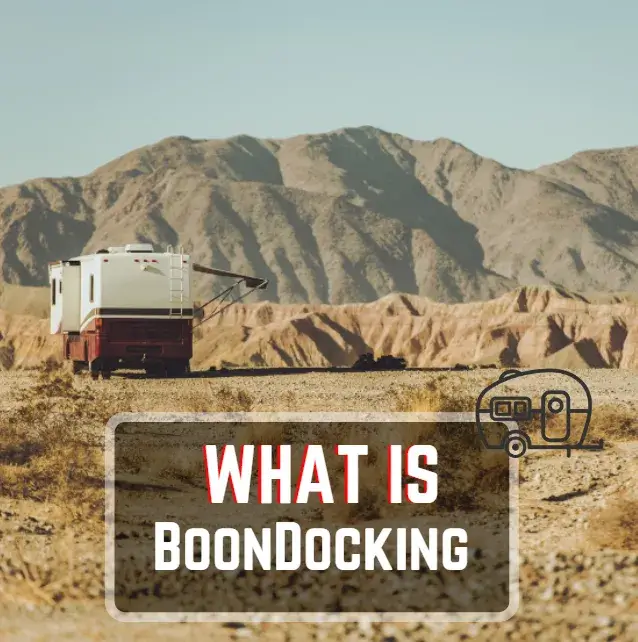What is boondocking? Why, that’s easy, friend!
Boondocking is your golden ticket to better RV adventures.
Boondocking is the art of off-grid RVing. No power or no water hookups—just you and your trusted poop shovel. (Or, ideally, a self-contained RV plumbing and toilet system.)
It makes things a bit trickier, of course. However, it also locks in some of the BEST RVing adventures you can have. Why park up in a crowded, noisy RV park filled with golden oldies and screaming rugrats when you can instead go free camping, alone, in iconic wilderness destinations.
As you might have noticed, I’m a bit biased towards boondocking. Across my years of van and RV travel experience, it’s safe to say that maybe 80%or more of my camping has been “out in the boonies”.
So, yes, I’m a bit of a fountain of key boondocking knowledge. The best boondocking tips, tricks, and expert hacks are practically gushing out of my orifices! (I apologize for the mental imagery.)
How to master the art of boondocking. That’s what you’ll learn from this comprehensive beginner’s guide! My friend, stop having subpar RVing adventures…
Everything gets better out in the boonies.
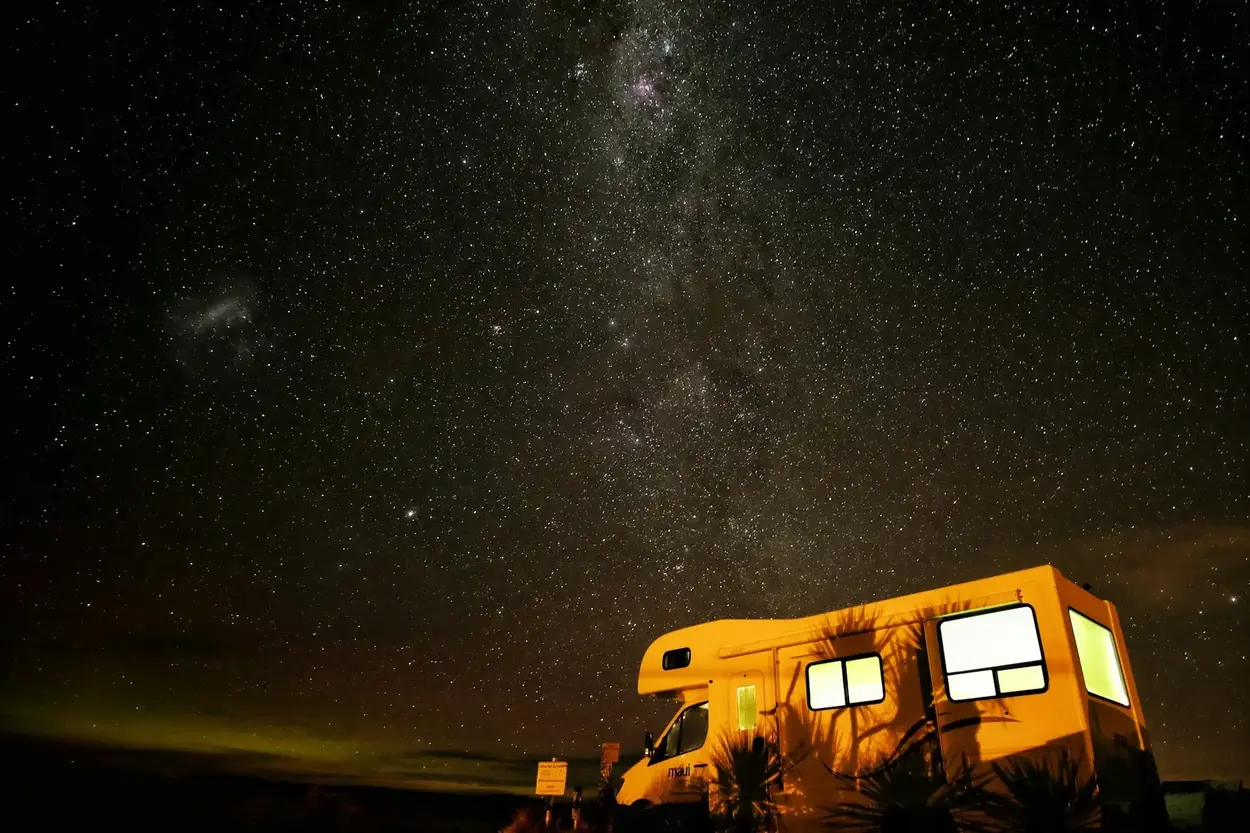
What is Boondocking: All About the Art
So, what is boondocking? Well, to reiterate boondocking is the ULTIMATE off-grid camping adventure for free-spirited RV travelers.
As mentioned, it’s camping without any hookups or dedicated campground facilities—so no water, electricity, or sewer connections. Cell service is often hit-and-miss as well, depending on your RV’s internet solution.
Boondocking usually takes place on public lands or secluded areas away from typical RV parks and designated campgrounds. There are some exceptions to that, but generally, that’s the score. There are areas where it’s perfectly legal to boondock, places where it’s much less legal, and then those lovely grey areas that us nomads are such fans of.
Now, going off-grid or semi-off-grid does change a few aspects of RVing. For safety and success, you need to stay in much tighter control of several things:
- Resource management (like your water and electricity)
- Trip/route planning
- RV maintenance (e.g. tires, oil, etc.)
- Having all your must-have RV gear and essentials
- And emergency preparedness (like first-aid kits and remote communications)
But the trade-offs are HUGE. The word ‘boondocking’ means freedom. There’s no worrying about cramped campsites and hefty fees…
All you do is pull up, set up, and relax in picturesque remote locales under a blanket of stars. And for free.
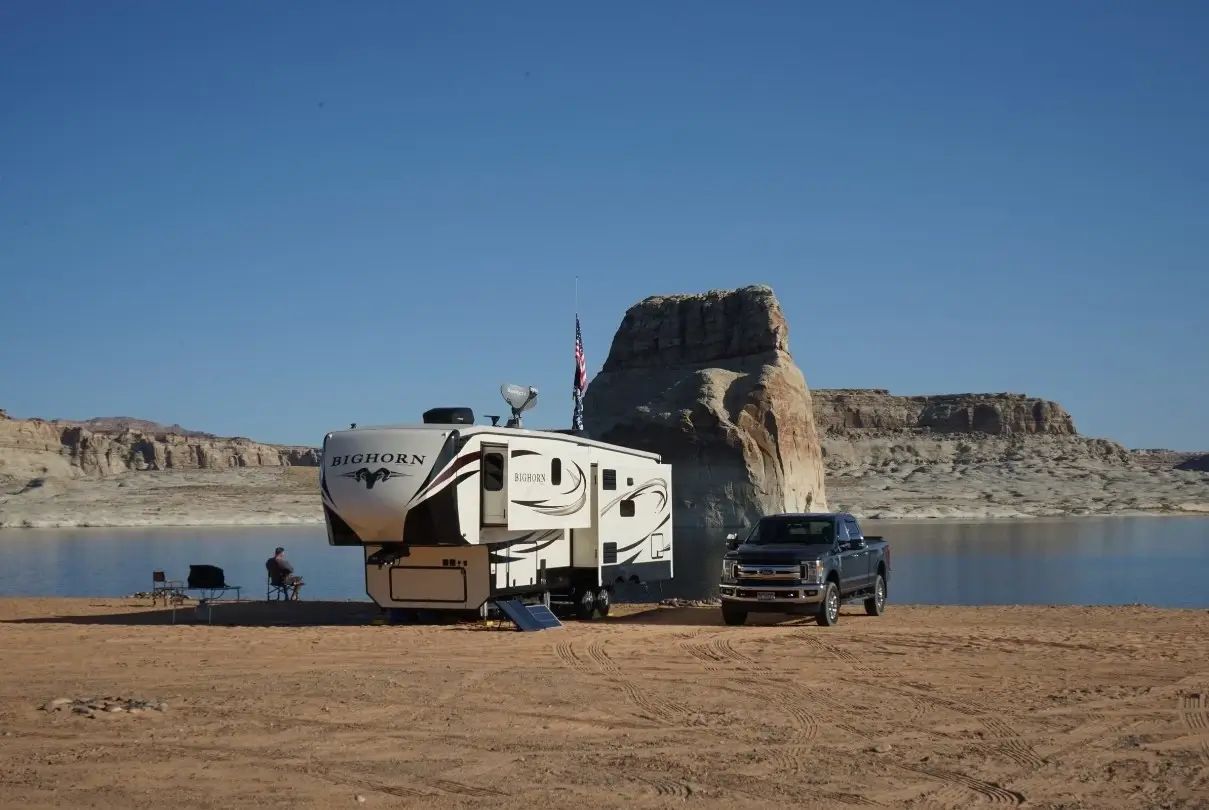
Sure, sometimes, a powered campground or even a hotel for a night becomes preferable after a spell of rugged camping. But then, after you recharge with some luxury, it’s right back to basics and enjoying the bliss of simplicity.
That’s what boondocking is: minimal, simple bliss.
So now that I’ve sold you on the BEST way to RV, let’s talk about how you can find some boondock-able banger spots yourself!
What is Dispersed Camping?
Dispersed camping is RVlife at its rawest. Even if you’re living it up in a decked-out motorhome, it’s still considerably more rugged than an RV park. And if you’re vanlifing it like the OG dirtbags, it’s pure grungy old-school minimalism!
“Dispersed camping” refers to boondocking in the broadest sense. It’s basically the official public regulatory term for everything I described in the section above! Dispersed camping is camping outside of developed campgrounds on public lands. For example, this often looks like camping in national and state forests or Bureau of Land Management (BLM) areas without any facilities or amenities.
You don’t use designated campsites either. Instead, you find an open spot to park your RV and simply set up! However, there are still local regulations to abide by for both safety and environmental sustainability.
For example, rules usually state to stay 100-200 feet away from water sources and main roads. They also usually require campers to be ‘self-contained’, meaning all your amenities, including your kitchen, utilities, and your RV’s toilet and waste-water system, must be enclosed within the motorhome.
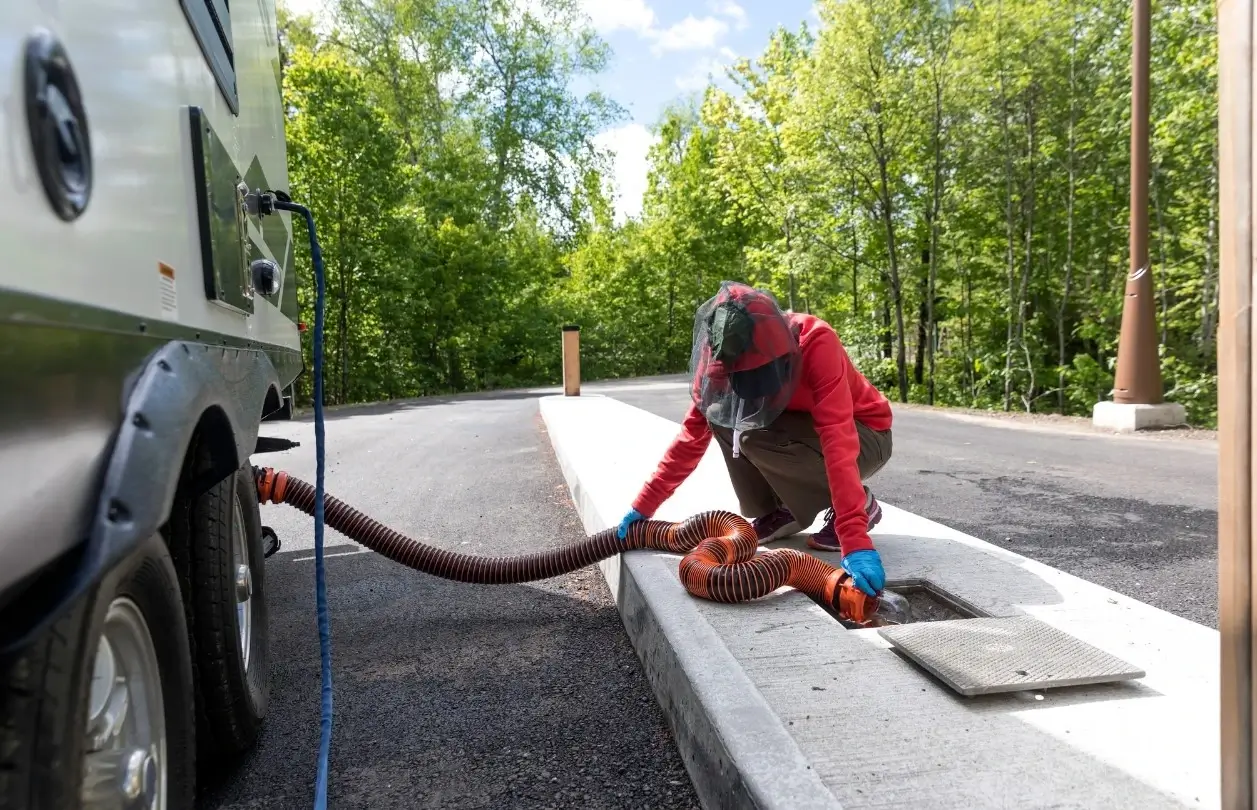
The benefits of dispersed camping are clear. Solitude, immersion in nature, and zero camping fees. Since you’re often in wide-open, empty spaces or forested areas, dispersed camping is primo for a peaceful night under the stars without any nosy neighbors in sight.
But please remember to leave no trace. The unwritten code of boondocking is to ALWAYS leave a place exactly as we found it (or, ideally, better).
Be self-sufficient. Practice eco-friendly camping principles. And leave no trace.
The boonies should be best for everyone.
What is Designated Dispersed Camping?
Designated dispersed camping is the step up (or down, contingent on your perspective) from pure wilderness camping. Overall, it offers a bit more structure than dispersed camping.
Instead of choosing any open area, in designated situations, you’ll park at pre-outlined designated dispersed camping sites. These sites are often created in semi-wild areas on BLM or Forest Service land to help control the flow of people and their impact. You might see basic markers or posts indicating these spaces. Additionally, sometimes fire rings or pits as well as designated areas for parking are also present.
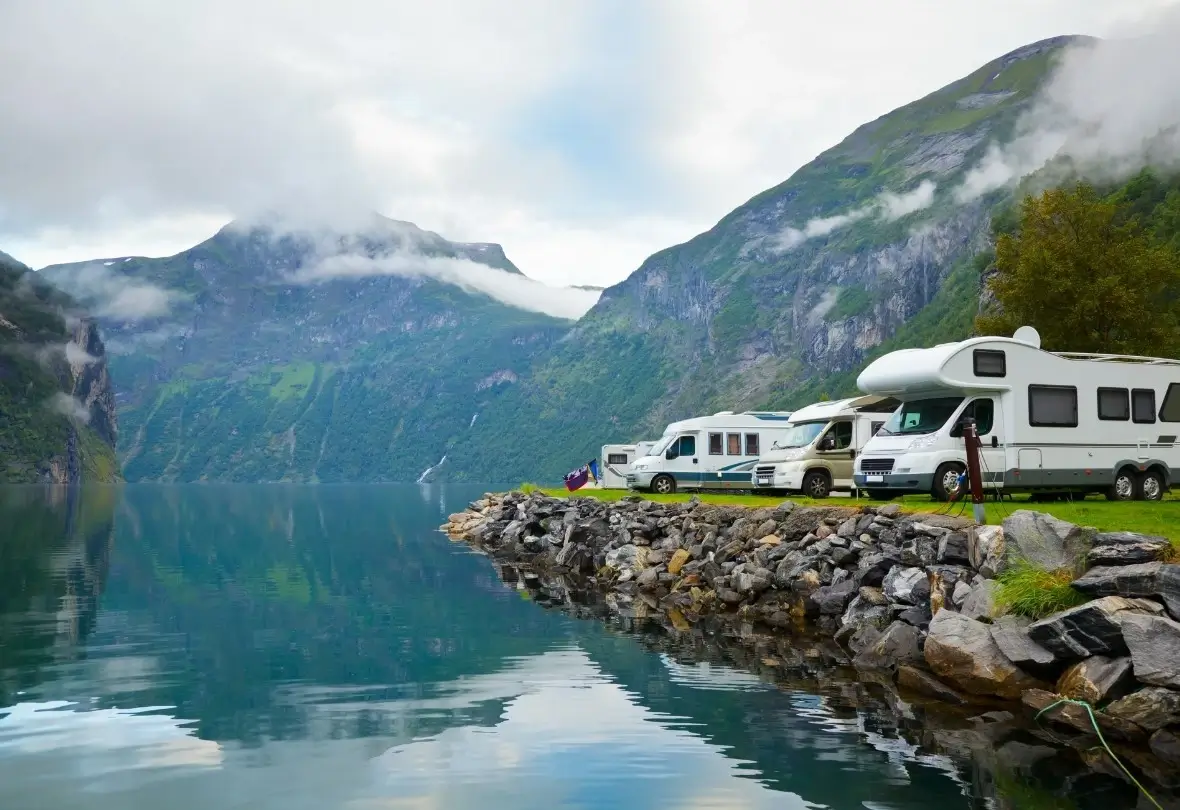
This setup gives you the best of both worlds! It’s still low-cost (and sometimes even free!). You’re still away from crowds and rowdy weekend warriors. But you also get more organization with a bit of a safety net.
If you’re new to boondocking, designated dispersed sites are a great way to dip your toes into the lifestyle. It’s still more-or-less off-grid camping with some guardrails in place. Admittedly, there have been several times in my boondocking career I would have benefitted immensely from having a few guardrails in place.
(Teehee.)
How to Find Boondocking Sites
Alrighty! So how do you find all these bomb-ass spots?
Finding a good boondocking location takes a mix of research, patience, and a little luck. It also can take a little trial and error, scouting around in a new area for the most primo park-up.
That said, modern technology makes things easier! Here are some tips and resources for finding those beautiful boondocks:

- Public Lands Websites. Start with official resources like the official BLM website or the National Forest Service’s interactive map of sites. They often provide all the locations, rules, and information for any local dispersed camping areas.
- Apps and Online Communities. Get yourself a resource made by boondockers and for boondockers! Apps like iOverlander, Campendium, and FreeRoam are loaded with real-life reviews and photos from other genuine users. There are whole communities dedicated to finding the best spots!
- Network. And as you travel around, ask locals and other RVers you meet for their thoughts on the best spots. A good smile and a little grease for the wheels can net you some top-tier secrets.
- Satellite Maps. Google Maps and Google Earth can give you a sneak peek of potential spots before you even leave home. Maps.Me is especially excellent for off-roads and fire trails. Oh and pro-tip: try Google Maps’ “Satellite” map setting for even more reconnaissance.
- Scout Ahead. Once near your location, scope it out before driving in just to make sure it’s boondocking-safe and RV-friendly. If you’re lugging a towable RV, such as a fifth wheel or travel trailer, detach it first before scouting about. If it’s a vehicular RV, I strongly advise getting out and scouting on foot before committing to any dodgy roads.
How To Boondock in an RV
Step 1: mastering self-sufficiency. Step 2: balance comfort with minimalism. Step 3 is to just muddle your way through some messes…
But then Step 4 is to profit from the toils of your labor!
But whoever said the muddled mess had to be quite that laborious? Nay! This is a beginner’s boondock guide…
So let’s cover all the top tips and how-to’s, no matter whether you’re parking overnight or planning an extended long-stay in the middle of nowhere!
Choose a Time and Location
The timing and location of your arrival can make or break your camping experience. For safety, aim for secluded areas. You want places that are out of sight from main roads and thoroughfares but also aren’t too isolated if you’re totally new to wild camping.
National forests, BLM lands, and far-off desert spots and wilderness areas are popular choices for boondocking. But consider when you’re pulling up too. Driving in at night and during quiet hours, for example, makes setting up a helluva lot less fun. But there are far fewer prying eyes on stealth-preferred campers too!
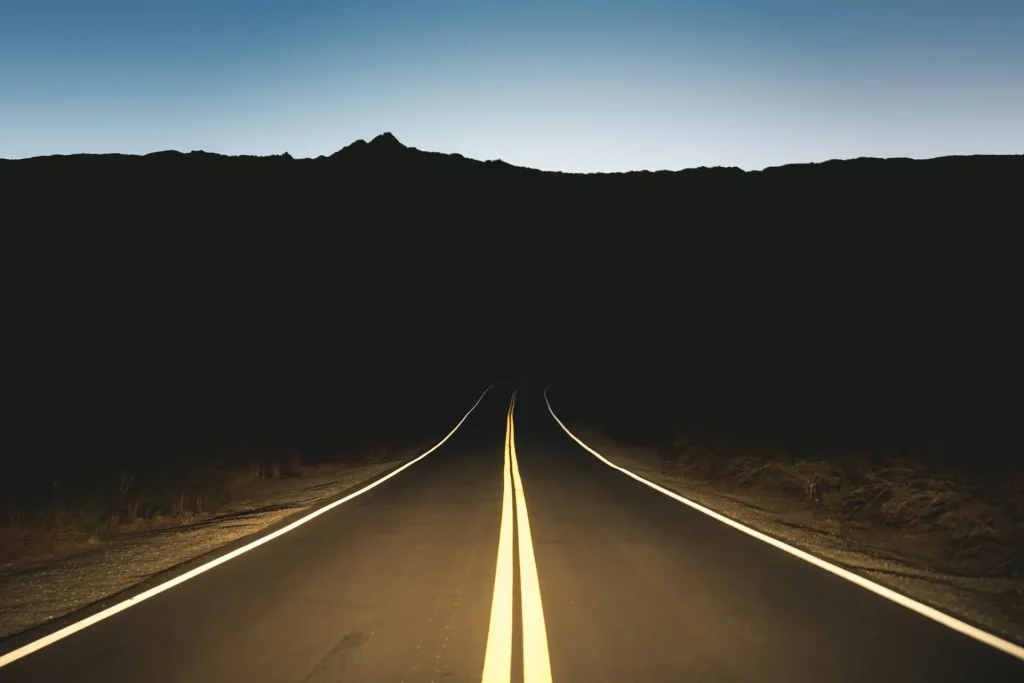
And regarding solitude, aim for what you’re comfortable with. Personally, I usually go for completely isolated remote locations away from people and authorities alike. But then, I’m plastered with tattoos, drive a boondock-ready converted DIY campervan, and usually look like I’m en route from the nearest fight club!
I’ve met many RVers who feel safer with at least some other folks nearby. Don’t push your comfort zone more than you have to, and stay near the people you feel you can trust.
Beyond that, trust your own instincts. Always have a backup plan. And if the site even feels the slightest bit off, just leave.
That’s the beauty of living in a motor-home.
Check the Weather
Stay on top of your weather forecast. And always a few days in advance too.
Boondocking bliss quickly turns to disaster if Mother Nature wills it. Regularly checking forecasts is a 100% non-negotiable when camping off-grid. Pitter-pattering raindrops on your RV’s roof might sound cozy. But in reality, a rainstorm in the wrong region can screw up your boondocking trip as much as any mechanical failure.
Dirt roads become mud traps. Rivers swell and burst. Even your RV’s handling on wet grass can fall apart.
So, please, remember to avoid unfamiliar rivers or areas prone to flash floods when choosing a boondocking spot. Check the upcoming weather and don’t go down any especially sketchy roads or park on terrain that might turn into a quagmire in an overnight downpour.
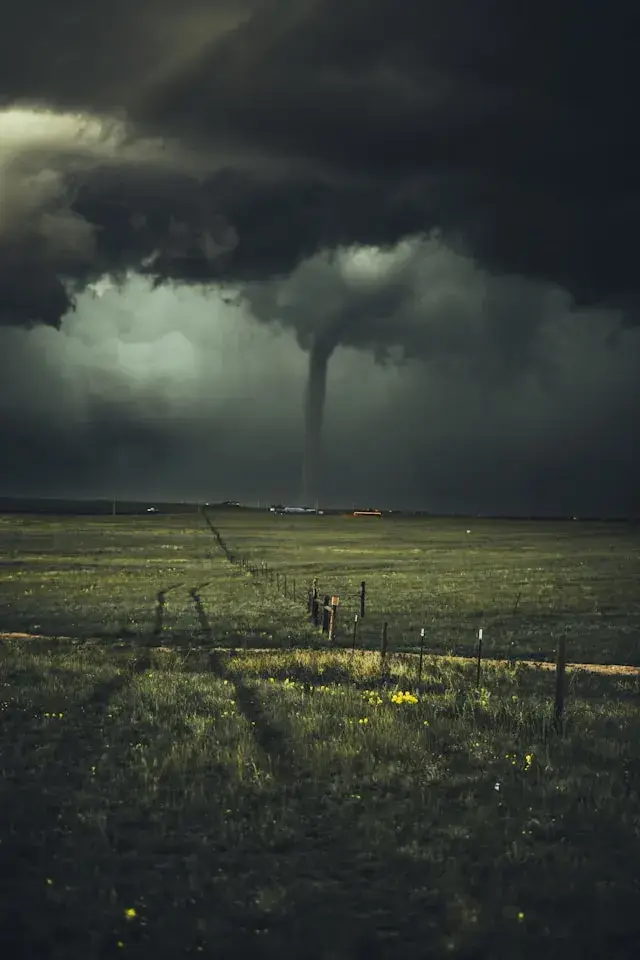
I recommend using multiple sources to get a solid picture of what’s ahead. A few top resources for weather forecasts include:
And honestly, so many more. There are sites, apps, and even the old-school radio solution! I personally recommend Windy as I love how robust it is with complete global coverage, but all you need to do is find your trusted source and keep on top of those checks.
Stay vigilant for incoming inclement weather, such as high winds, flash floods, or extreme temperature shifts. These all make boondocking more challenging—and sometimes dangerous too.
Forward-planning in this department saves you a world of stress and discomfort.
Rent a Quality RV
If you don’t actually own an RV yet, renting is a great way to test the waters. From more traditional dealerships to Airbnb-style RV-specific entries in the sharing economy, such as Outdoorsy or RVShare, there are heaps of terrific places to rent an RV!
When choosing a rental for boondocking specifically, consider the differences between RV classes too. look for a nimble that can handle rougher roads. Class B campervans are fantastic for tight spaces. Smaller Class C RVs also work well, balancing comfort with off-road capability.
On rental platforms, look for listings specifically marked for boondocking and dispersed camping. In terms of features, aim for rugged tires, solid suspension, and high clearance built for unsealed roads. Some RVs even come already equipped with solar power or larger water tanks for camping off-grid.
And don’t shortchange yourself either! If you really want to test the boondocking-life, then spend more on a better rental and see what the craze is about.
Stock Up On Supplies
Resource management, baby! Boondocking means you’re likely miles from the nearest grocery store. Stocking up on essentials and creature comforts before heading out is crucial to having a good time boondocking.
Here’s what you’ll need to stay prepared and comfortable!
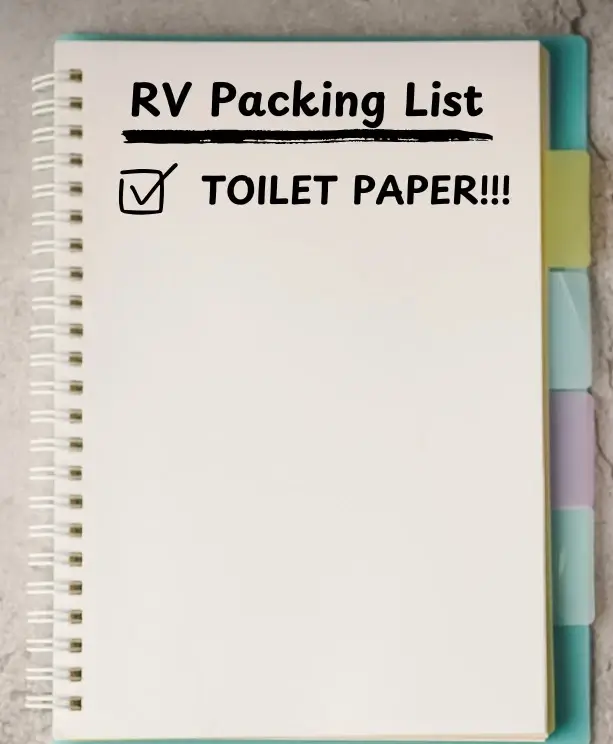
- Water. Pack at least one gallon per person, per day. This includes drinking water as well as water for washing dishes and other practical things. If your RV has a water tank, make sure it’s completely full.
- Food. Stock those pantries! Non-perishables like canned goods, pasta, and freeze-dried meals work best. As for perishables, plan meals and don’t overpack to avoid wastage.
- Power. You’ll want ready-to-go power solutions. Solar panels, a generator, or extra batteries… Whatever your system, have what you need to keep things running smoothly when camping without electrical hookups.
- Fuel. Bring extra fuel for your heating and cooking methods. And some backup gasoline if you’re running a generator!
- First Aid Kit. A fully stocked first aid kit is essential. (And this includes your personal medication too.)
- Trash Bags. Simple but necessary. Pack out everything you bring in. No one likes a tosser.
- Tools and Spare Parts. Jumper cables, wrenches, and a spare tire are all must-have boondocking gear for roadside fixes. Either have a well-stocked toolbox or take an emergency roadside kit alongside the first aid kit.
Complete Final Checks
And then, after supplies, give your RV a thorough once-over. Ensure you run through all the maintenance things that definitely need doing before any big road trip.
Here’s a quick checklist to make sure your rig is boondock-ready!
- Check Tires. Don’t go boondocking without the best RV tires you can afford! And ensure they’re properly inflated and the tread is in good condition too. For dirt and gravel roads, you might even consider deflating below the recommendations (by about 10-15%) for better traction.
- Inspect Fluids. Top off your oil, brake fluid, coolant, coffee mug, etcetera.
- Test Batteries and Power Sources. Make sure your batteries are charged. And run a quick test on your solar and/or generators too, just to make sure they’re functioning as intended.
- Secure All Doors and Windows. Tighten and lock everything to prevent any rattling or unwanted leaks. Make sure your crockery isn’t going too rock-ery either.
- Empty Waste Tanks. Alongside filling your water tanks, don’t go boondocking without also emptying your black and gray tanks. The last thing you want in the middle of nowhere is an overflow!
Hit the Road!
And that’s the tips! I hope you’ve signed your RV up for roadside assistance…
Because now you’re ready for the adventure that is boondocking!
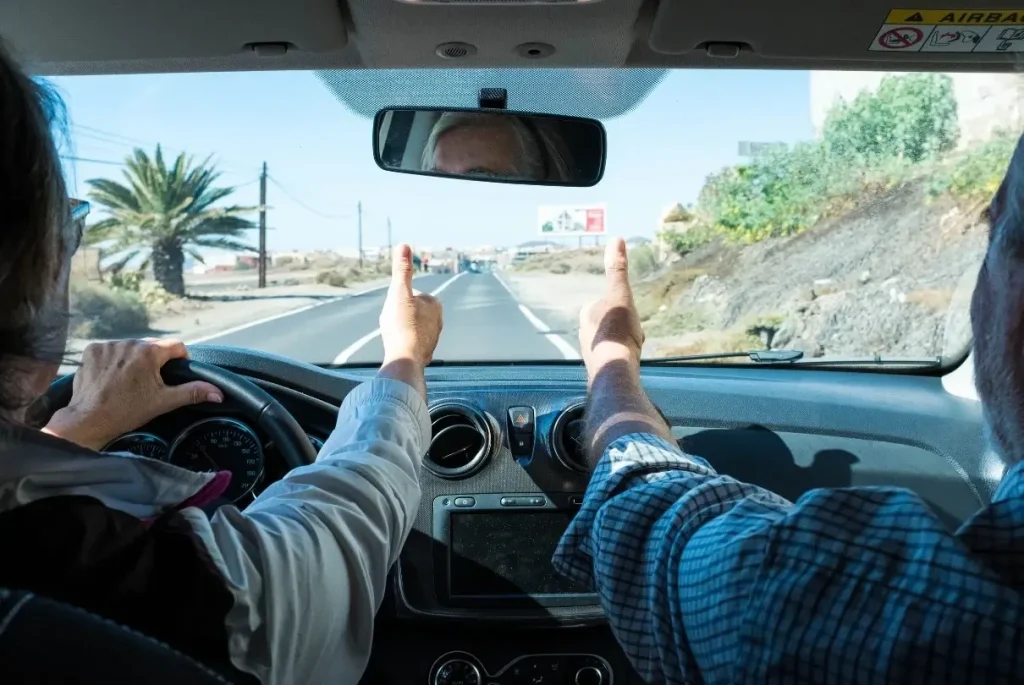
Head out with an open mind and open heart; respect local rules and spaces. Identify the rules you can break (like state ones teehee) but abide by the rules that are there to keep things as they should be for the local residents.
And most of all, leave no trace! Respect nature. That’s why we’re there right? To soak up the beauty of the wild, open world.
So be a part of the solution and keep it that way. But most of all, enjoy those sunrise coffees and sunset wines.
Bountiful beverages just make boondocking better.
Alternatives to Boondocking
Boondocking out in the wild offers freedom and solitude. But it’s not the only way to camp off the beaten path!
If you’re looking for a bit more structure, accessibility, or human connection but without the full-blown RV park experience, there are several boondocking alternatives to discuss. These options blend adventure with comfort.
Best-case scenario, you might even make a friend!
Dry Camping in a Developed Campground
“Dry camping” is still really in the style of boondocking. Unpowered, hookup-less, and self-sufficient are still the names of the game.
But dry camping in a developed campground gives you an off-grid-reminiscent experience with a bit more leniency. Many official campgrounds, especially in national and state parks, offer basic but nonetheless developed sites. They won’t have hookups available, so it helps to bring a fuel-efficient portable generator or power station. They’ll also likely run a small campground fee.
But really, the prices are nothing like actual RV parks. Plus, you get a swathe of other delicious perks!
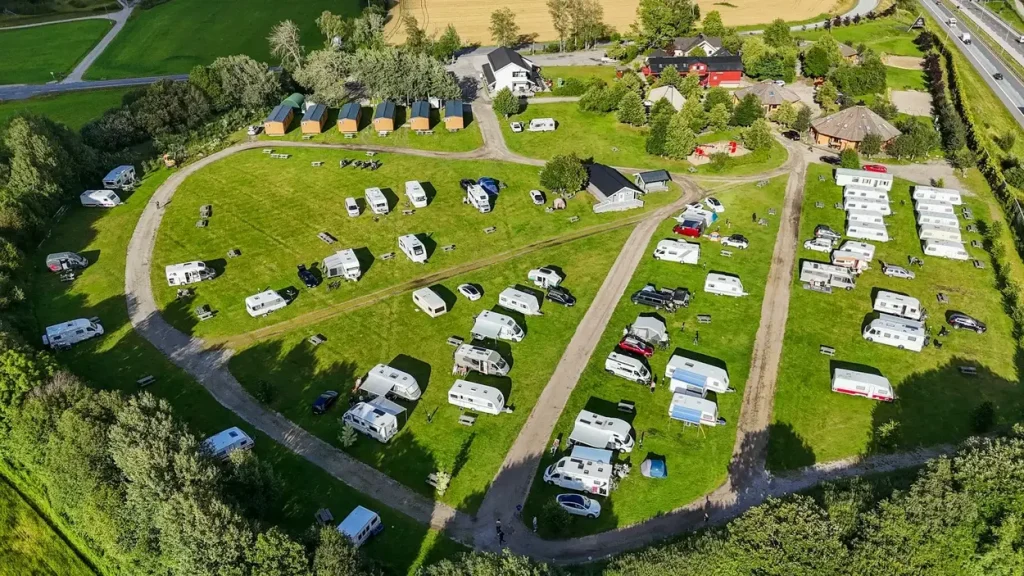
A lot of sites often come with awesome amenities like picnic tables, fire pits, and even restrooms nearby. Plus, developed campgrounds often provide easy access to hiking trails, scenic views, and ranger services for even more convenience.
For that reason, dry camping in developed campgrounds is great for both beginner boondockers and traveling families and groups alike! You get secluded nature AND restrooms.
The best of both worlds.
Parking Lot Camping
Parking lot camping, or my preferred nomenclature “urban boondocking”, is a great fallback for a quick overnight stay or when passing through more built-up areas. It requires a low profile and awareness of effective stealth camping practices. But it’s also just as free as being out in the sticks!
Many major retail or restaurant chains like Walmart, Cracker Barrel, Cabela’s, and even some 24-hour fitness centers welcome RVers parking and staying overnight. (Just make sure to confirm with the actual store location first, and it’s nice to buy something too as a sign of good faith.)
Urban boondocking does have its quirks, of course. It’s not the most scenic option, privacy is limited, and it’s important to minimize your light and noise output to not draw attention. And to prioritize respect for established residents. The more respectful you are, the more you’ll be left alone.
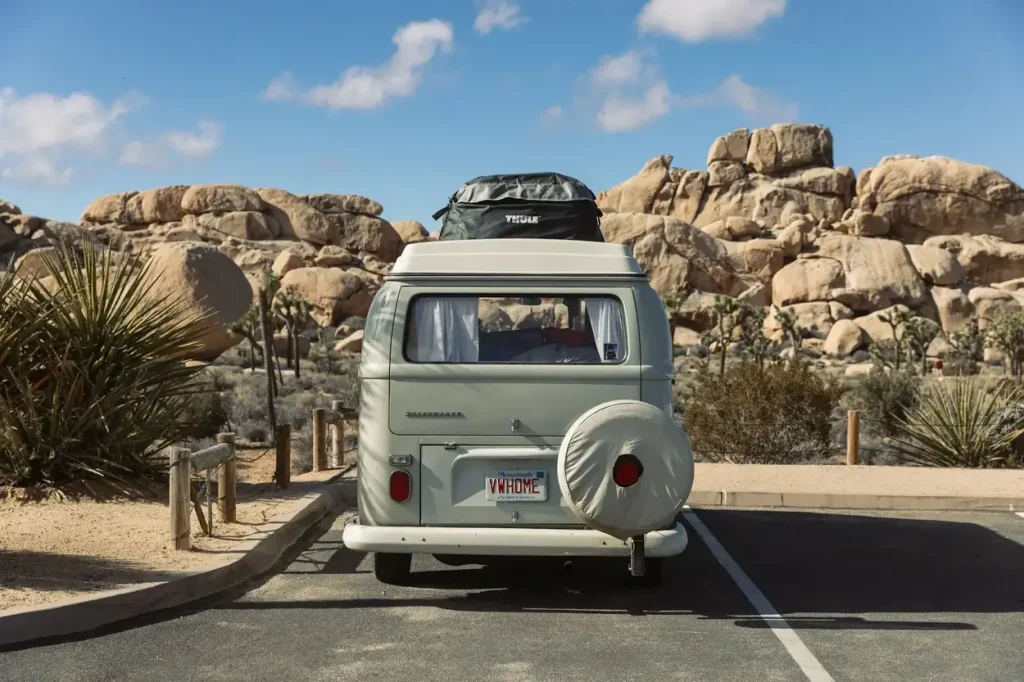
Also, as a few safety tips, try to park in well-lit areas in nicer neighborhoods (but not so nice that you’re camping near the other type of “wrong” person). Oh and always remember to lock up BEFORE you go to sleep.
But those are really just the expected cons that come with parking up in populated areas. As for the pros, they’re excellent! Camp for free, enjoy convenient overnighters, and just step outside in the morning for coffee and snacks.
There are definitely some perks to being on-grid!
Mooch-Docking
Back in my day, “mooch-docking” was just called being a part of a community. But in a highly individualistic society, we frown upon collective support and responsibility!
Mooch-docking is exactly what it sounds like: boondocking by way of “mooching”. I.e., parking your RV on a friend or family member’s property (provided they live in a state that allows RV living on private property). And generally with their permission too (otherwise it’s called “squatting”).
Despite the tenuous title, mooch-docking is a win-win in my book! You get to stay in a safe, familiar spot on private land while reconnecting with your loved ones.
That said, to mitigate the “mooching” element, it never goes astray to help out around the house, show up with presents, or even just throw a few dollars your hosts’ way to help with expenses as a thank you. Much like leaving no trace, aim to leave a place better than when you arrived.
It also doesn’t have to just be friends and family. The RV community is renowned for its welcoming spirit. Mooch-docking is the perfect example of this camaraderie!
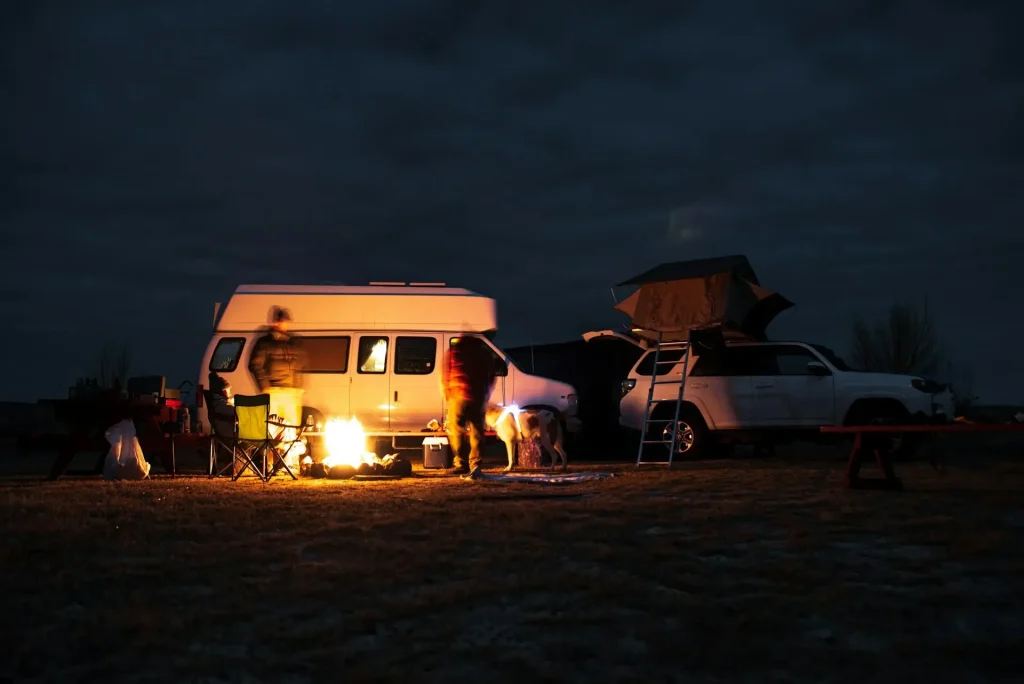
Fellow RVers often open up their driveways and fields to like-minded travelers. You can either try networking and making friends on the roads ahead or try joining an RV club or community platform like Boondockers Welcome to find a sweet connection.
Don’t let the name deter you! Mooch-docking combines the best parts of boondocking with the best parts of being a part of a niche community and having friends all over. When we’re out there for long stints on the road, it helps a lot to find these little slivers of home along the way.
Get Ready to Boondock
And we’re almost there. If you’ve read this far and are brimming with excitement to escape the crowds and cities, then you might just be ready to boondock!
But before that, here’s one final checklist of things to do BEFORE boondocking. After all, the name of the game is self-sufficiency…
So get used to writing a lot of lists!
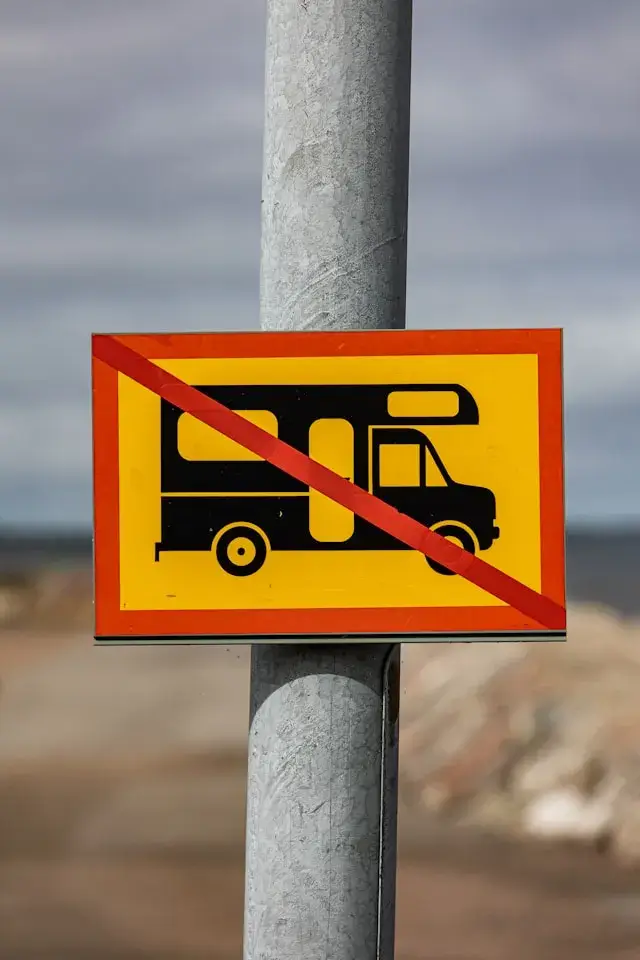
- Water. Fill up your freshwater tank and pack extra emergency water. The rule of thumb is to pack at least one gallon per person per day for drinking, cooking, and washing.
- Food. Stock up on non-perishable items like canned goods, pasta, snacks, spices, etc. Plan simple, hearty meals that consume minimal resources when preparing. Oh, and aside from perishables, prioritize healthy snacks like nuts and fruits over empty calories.
- Power. Have a top-notch electrical system and the best RV batteries your budget allows for, Make sure your batteries are fully charged before you leave too! Solar panels or a portable generator also go a long way when boondocking, and don’t forget extra fuel if you’re relying on the latter.
- Propane. Fill your propane tank for cooking, heating, and refrigeration if using propane-based gear.
- First Aid Kit. Always triple-check that your kit is stocked with essentials like bandages, antiseptics, pain relievers, and any necessary medications. Things for bugs, like a tick remover or sting relief cream, are also smart additions.
- Trash and Waste Disposal. Bring more trash bags than you think you’ll need. And for scat’s sake, DON’T forget to empty your gray and black water tanks before leaving!
- Tools and Spare Parts. Carry a toolkit (or roadside emergency kit) with essentials like a wrench, pliers, duct tape, jumper cables, and a tire repair kit. Spare fuses are a smart addition for RVing too.
- Navigation: Download offline maps on platforms like Maps.Me or Google Maps, and an offline topographic mapping app like Gaia GPS doesn’t hurt either. Plus, I always take a physical map and compass as a backup in case of technological failures.
- Safety Gear. Most of this would likely be included in a roadside emergency kit. All the same, never skimp on safety gear. One crucial gadget for RVing I would recommend is some form of long-distance radio communication system or personal locator beacon. Something that enables you to stay in touch in an emergency even when deep in the backcountry.
Safe camping equals happy camping. You never know when you might encounter a rogue mountain lion!
Conclusion
And that’s the end: now you got more checklists than you’ll ever need! And all the hard-earned knowledge to go boondocking yourself.
I want to stress that there is no wrong way to RV. (Well, except maybe leaving a trace.) If you enjoy the communal feeling of busier campgrounds or the off-brand luxury of higher-level RV parks, that is 100% A-okay!
Buuuut I would always recommend trying boondocking at least once. For me personally, it is the ULTIMATE way motorhome around.
Feeling self-sufficient out on the road feels good. Seclusion and learning to love the company of yourself is a truly noble art. Waking up, popping off a morning whizz on a nearby tree, and then brewing a coffee with the birds simply never gets old.
Start small and easy. Try designated dry camping or even a rental RV before you commit to the boons of boondocking. Scope out how much it costs to rent an RV, find something in your budget, and go for a more forgiving adventure first! Admittedly, it’s a tad easier in an established campground with composting toilets and dump stations.
But then, finally drop that six-figure sum on that off-road beast you’ve been craving. Soup it up and never go home! C’monnnn… treat yo’self!
Beverages, birds, the beautiful sky… It all just gets better out in the boonies.
What are you waiting for?


